Potřebujeme váš souhlas k využití jednotlivých dat, aby se vám mimo jiné mohly ukazovat informace týkající se vašich zájmů. Souhlas udělíte kliknutím na tlačítko „OK“.
ASTM D7785-12
Standard Test Method for Water in Lint Cotton by Oven Evaporation Combined with Volumetric Karl Fischer Titration
Automaticky přeložený název:
Standardní zkušební metoda pro vodu v Lint bavlny trouba stříkání kombinaci s Objemový Titrace podle Karl Fischera
NORMA vydána dne 1.2.2012
Informace o normě:
Označení normy: ASTM D7785-12
Poznámka: NEPLATNÁ
Datum vydání normy: 1.2.2012
Kód zboží: NS-39110
Počet stran: 7
Přibližná hmotnost: 21 g (0.05 liber)
Země: Americká technická norma
Kategorie: Technické normy ASTM
Kategorie - podobné normy:
Anotace textu normy ASTM D7785-12 :
Keywords:
Karl Fischer reagent, lint cotton, pyridine-free, volumetric Karl Fischer titration, water content, water regain, ICS Number Code 59.080.01 (Textiles in general)
Doplňující informace
| Significance and Use | ||||||||||||||||||||||||||
|
The water content of raw or lint cotton determined by this test method, calculated from the required volume of reagent, may be greater, equal to or less than the moisture content measured by standard oven drying methods. These differences may be of significance in commercial transactions (1-3) (see also Appendix X2). Water content by this method is not to be considered the same attribute as moisture content. Standard test methods using volumetric and coulometric Karl Fischer reagent are two of the most widely used procedures for the determination of water. The volumetric method is typically used for the routine determination of water in the mass percent range of concentrations. If samples contain very low levels of water, the coulometric technique should be considered (see Test Methods D1533, E1064). This test method for testing the water content of cotton can be used for acceptance testing of commercial shipments of lint cotton, manufacturing control and calibration of fast, indirect sensors to measure water. Information on the water content of cotton is desirable since the physical properties of cotton are significantly affected by its water content. Variations in the amount of water present, or its regain, affect the mass and hence the market value of a lot of material. The observed volume of Karl Fischer reagent used in this test method to analyze a specimen represents the water in the absence of side reactions in an oven supplied with air (3). Note 2—Side reactions in cotton that confound the actual weight loss due to water have been demonstrated in two laboratory ovens and a thermogravimetric analysis oven supplied with air (3). This results in an approximation regarding the actual amount of water in cotton based on mass loss by drying. If the moisture content by oven drying agrees with the water content measured by Karl Fischer titration, the one-to-one correspondence may be coincidental due to the presence of both negative and positive biases in moisture content values. |
||||||||||||||||||||||||||
| 1. Scope | ||||||||||||||||||||||||||
|
1.1 This test method covers the determination of the total amount of water (free and bound) in raw and lint cotton at moisture equilibrium from conditioning in the standard atmosphere for testing textiles. Note 1—For other methods of determination of moisture in lint cotton that do not specify conditioning to moisture equilibrium, refer to Test Methods D2495 and D1348. 1.2 This test method requires the use of oven evaporation to remove all of the water in the fiber matrix, volumetric Karl Fischer (KF) titration to determine water content and water regain, and control current potentiometry to detect the end point. 1.3 This test method is not intended for use with potentiometric (zero current) and coulometric Karl Fischer titrators (see Test Methods D1533, D4377 and E1064), nor is this test method intended to be used with methanol extracts of cotton (See Test Methods D1348). 1.4 The values stated in SI units are to be regarded as standard. No other units of measurement are included in this standard. 1.5 This standard does not purport to address all of the safety concerns, if any, associated with its use. It is the responsibility of the user of this standard to establish appropriate safety and health practices and determine the applicability of regulatory limitations prior to use. For specific precautionary warnings see 9.1. |
||||||||||||||||||||||||||
| 2. Referenced Documents | ||||||||||||||||||||||||||
|
Podobné normy:
Historická
15.6.2013
Historická
1.2.2012
Historická
15.5.2014
Historická
1.6.2012
Historická
1.7.2013
Historická
1.6.2010


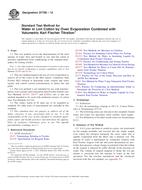
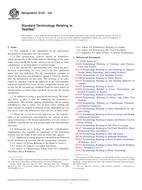 ASTM D123-13a
ASTM D123-13a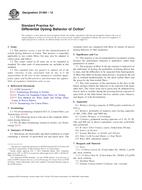 ASTM D1464-12
ASTM D1464-12 ASTM D3136-14
ASTM D3136-14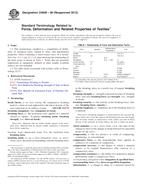 ASTM D4848-98(2012)..
ASTM D4848-98(2012).. ASTM D4920-13
ASTM D4920-13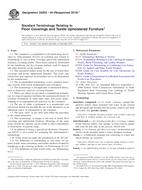 ASTM D5253-04(2010)e..
ASTM D5253-04(2010)e..
 Cookies
Cookies
